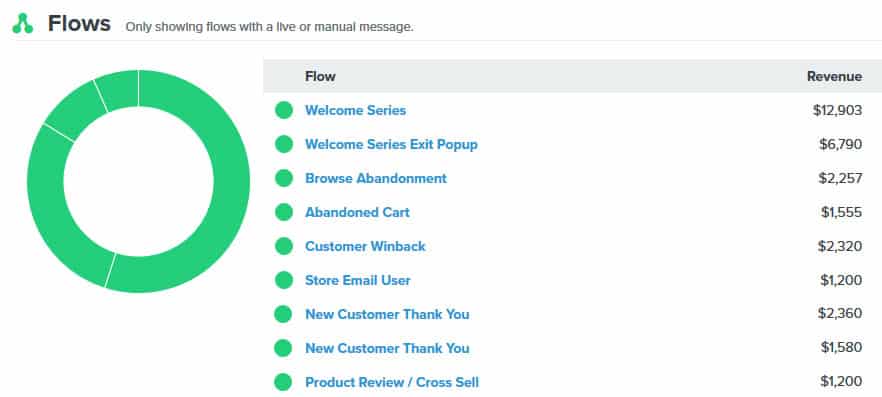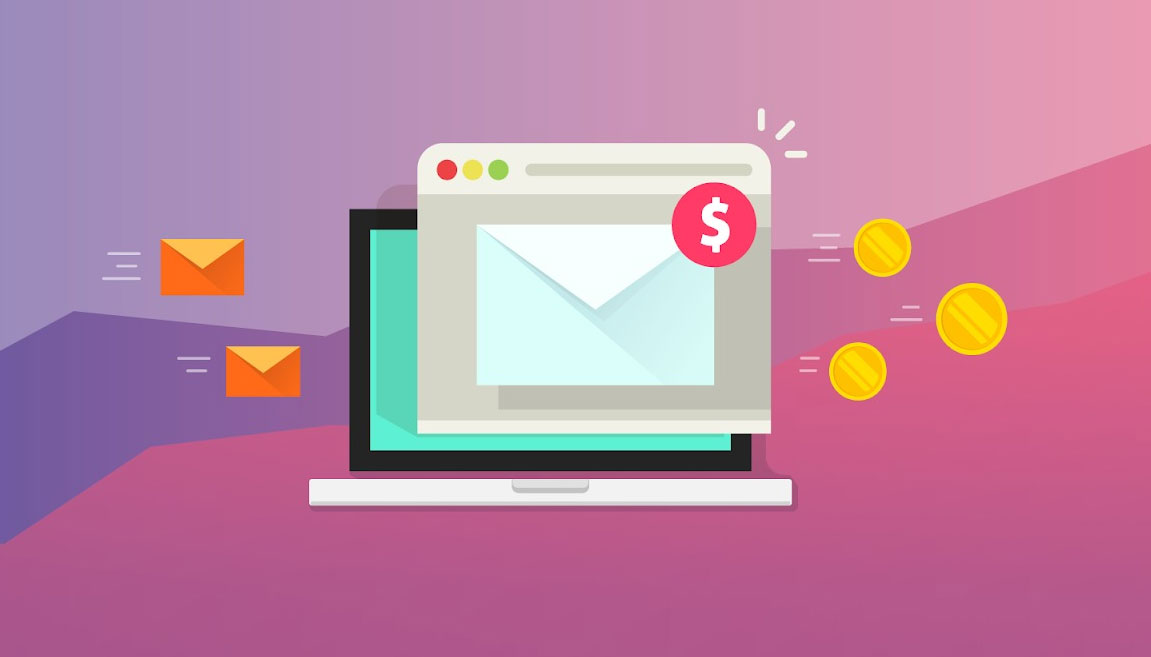Sharing the exact eCommerce email marketing automation strategy we are using to generate tones of money for our clients [ with almost no investment ]
Before we begin, see below the actual results we achieved using this email marketing automation strategy recently for two clients –


One of the wrong perceptions I have seen over time is that email marketing automation is just for the bigger players in the market.
As a marketer or store owner, if you think the same way; you are losing a big chunk of money every single day.
Offering a personalized experience to customers is the key to success in any business and the same thing applies to email marketing as well.
You have to stop treating an email address in your list as simply an email address. You need to start understanding this email address of an individual living being and offer personalized offers based on what they are interested in.
And this has to be based on the data you have about them; not just based on what you think they want.
When it comes to email marketing automation for an eCommerce store, what most people can think of is just a cart abandonment email.
However, there are so many other triggers that if effectively used can add up a big amount of extra sales without asking for a separate investment. What all you need is the effective automation of email marketing that can help you retain your customers and make them loyal to your brand.
Ecommerce Email Marketing Automation Guide
While working for our clients, we divide these triggers into two separate categories –
- Pre-Sale Triggers
- Post-Sale Triggers
Pre-Sale Triggers for Email Marketing Automation –
#1. ABANDONED CART CAMPAIGN
Close to 70% of shoppers abandon their carts. Even if you only get a fraction of these customers back, you’re making a tonne of money. We include around 3-5 emails in this sequence. Here is what to focus on in each email marketing automation :
- Abandoned Cart Message #1 – This email should be sent immediately after a cart is abandoned (or very close to it). Some customers genuinely forgot or were distracted, so you should focus on simply reminding them. There are a million reasons why they might have abandoned it, so be thinking about their experience – did the power go out? Did their children distract them? Did they get abducted by aliens? You can be funny about it in a niche-focused way depending on your store.
Don’t send a discount code yet: some shoppers try to abandon their carts to fish for coupons. Focus on safety, security, and a friendly reminder. Build their trust in your store… this is a good opportunity to use some social proof or testimonials. - Abandoned Cart Message #2 – Send this email 12-24 hours after the first message. In this email, you can offer a coupon if they complete their purchase. Again, focus on WHY they should make a decision NOW (hint: the coupon is a good reason). Giving them exclusive savings will help push them toward a purchase decision. Put a bit of scarcity with the coupon by telling them how long it’ll last.
- Abandoned Cart Message #3 – Send this email 12-24 hours after the second message. This email should focus on SCARCITY and Remind them of the coupon (or give an even bigger one depending on their cart value), and tell them that it will only last 24 more hours. At this point, you can tell them that their items won’t be held for them much longer, as it wouldn’t be fair to other customers (supply is limited). Get them to decide due to fear of missing out (one that they won’t regret of course).
#2. WELCOME SEQUENCE
This is a series of emails to send out once a new subscriber joins your email list. These emails are important because in most cases they are a customer’s first interaction with your emails, and will set the tone for the relationship. This sequence should be 3-5 emails long. Here is what to focus on in each email marketing automation :
- Welcome Message #1 – This email is extremely important and should be sent immediately after a new subscriber joins the list. This email should be more of an introduction than a sales letter. In this email, you get to introduce yourself and your brand, tell them what to expect, and ask them to move you to their main inbox. This is important as this helps prevent your emails from going into the junk folder.
- Welcome Message #2 – In this email (normally sent 24 hours after subscription), you have some flexibility and can change it up based on your objective within your store and overall marketing strategy. For example, you can prompt them to enter a giveaway as thanks for joining the list. You can ask them to follow you on another platform if it’s meaningful to your business. Or you can send a discount for subscribing (just make sure not to overlap with your abandoned cart or first email in the welcome sequence ).
- Welcome Message #3 – Again, this email will change based on your strategy for the second email and should be sent 24 hours after it. Follow up from the second email based on their interaction with it (did they use the coupon/enter the contest?). If they completed the task you wanted them to, you can get them to complete another task. Make this all seem like part of the onboarding process rather than just a regular old promotional email marketing automation. Talk to them based on where they’re at – they’re new subscribers. Since this is the case, focus on building trust, making them part of a group that they don’t want to be left out of, and giving them value before taking.
#3. LEAD GENERATION EMAILS
If you have a pop-up on your store, you’re going to be capturing email leads. It is important to follow up with these customers and make sure you’re capitalizing on traffic. Here’s a pro tip that not many people use: base your pop-up timer on how long a customer spends on your landing page.
This way, you won’t seem “spammy” or annoying by having it pop up right away. To get someone to commit to being on your list, you typically have to send them something: a discount, a chance to win a prize or a resource.
- Lead Generation Message #1 – In this email, you’re just following through on what you said you were going to give them in your lead gen pop-up. No need to be overly fancy, but you can add a time restriction for their discounts so they don’t think they have forever to make a decision.
- Lead Generation Message #2 – Send this email 12-24 hours after your first email. If you chose to go the discount route, remind them of the expiration (which should be 24 hours from the second email… make it long enough to take action on but short enough that they aren’t comfortable waiting around). If you offered a giveaway or free resource, you can now follow up on those with more value before asking for a sale, or now make the offer of a discount.
- Lead Generation Message #3 – This email should be the last reminder. Provide a bit of scarcity by letting them know that their chance to save is about to expire. If you were giving value in the first two emails, you can ask for a sale now since they have been given things that they want before being asked to buy. By now, your leads should have a bit more trust and are used to opening your emails.
#4. Browse Abandonment
Yes, it’s possible!!. You can send automated email sequences to customers based on their browsing of products in your store.
- Browse Abandonment #1 – This email should remind them of the product they were looking at in your store. You can also include reviews of that specific product from past buyers and any other interesting information about the product you may think of depending on the type of product.
- Browse Abandonment #2 – In most cases we use this email to send relevant product ideas to the customer they might be interested in. Sometimes depending on the offer we also include a discount valid for a limited period to drive them to make a purchase decision.
Post-Sale Triggers for Email Marketing Automation –
#1. Post Purchase Thank you
Here you have a customer who just showcased trust in your product & brand. You can capitalize on this moment to strengthen their trust in your brand by further emphasizing everything you stand for as a brand.
We do not target thank you series to directly generate sales but this is a great opportunity to build loyal customers. We generally include 2-3 emails in this sequence.
- Thank you #1 – Here we generally include a personal thank you note from the CEO. This email is generally sent out within the first hour of their placing an order. We also include the shipping plan to build anticipation among customers.
- Thank you #2 – Sent out after 24 hours from the first email, this email can be used to re-emphasize your brand values and promise. Depending on the products, we also include instructions/guides to use the product ordered.
- Thank you #3 – Sent out after 24 hours from the first email, we use this email generally to invite customers to participate in a survey and win a discount or gift voucher. A survey can include questions depending on what feedback you want to collect from customers.
#2. Product Review / Cross-Sell –
After someone purchases a product from you, they are a lot more likely to purchase it than someone who hasn’t. This is one of your most important flows because it will be targeting people who are likely to buy. The key is not to be too salesy – offer savings/further exclusive purchase opportunities as a reward for being a customer.
You can include an up-sell directly in your receipt (just make sure more than 50% of the message is transaction information), or you can send them a separate follow-up message. I like to keep this sequence fairly short at 1-2 messages since you don’t want to continually bombard your customers.
- Purchase Review Cross-sell #1 – Send this email after the product is delivered to the customer. Include a snippet of the product customer ordered and invite them to write a review about it. The more reviews you get for products in the store, these products become eligible for purchase by other visitors and customers. Sometimes we also offer discounts or gift vouchers to write a review to encourage more customers to write a review.
- Purchase Review Cross sell #2 – This will require a little work, but you should segment your list based on top products or categories. For example, have people who purchased a phone case in one segment and people who purchased headphones in another segment. Based on what they purchased, send them a follow-up email offering a discounted price on the appropriate product category (if they purchased a case sell them headphones, and vice versa)This email is just a reminder of the first email if they didn’t convert from it. You can offer an increased discount if appropriate.
#3. Customer Win Back –
Someone ordered from your store and then forget about you. This is a very common case in any eCommerce store. Getting such customers back on the website and making them purchase again from you is the primary goal of this flow.
We generally include 2 emails in this flow. The first email is sent out to customers who haven’t purchased again for 75 days. And the last email is scheduled to be sent out after 90 days of their last purchase.
- Win back #1 – Content ideas for the first emails can include your new arrival products on the store, featured blog or news resource about the brand, etc. If your store offers loyalty points, you can add those points to this email with an expiry note about these points.
We also include a discount offer if they come back and make a purchase. - Win back #2 – This is generally a follow-up email on the offer shared in the previous email.
#4. VIP Customers –
This is a great flow to build loyal customers, repeat business, and word-of-mouth referrals for your business. With this flow you can build a relationship with a part of your customers who are always there for you; spreading your word on social media, personal friend circle, or being your ambassador for your business wherever they need to be.
You have to decide what is the definition of a VIP customer for you. It can be based on lifetime order value or it can be based on the lifetime number of orders or any other milestone that sounds important to you.
Segment your customers based on the milestone you set and then the “VIPs should get the VIP treatment”.
- VIP email #1 – Once a customer achieves a milestone, your first email should let them know about it. We use this email to let them know their importance to the business. By doing this you strengthen their relationship with them. As a reward, we also include a special discount not available to anyone else.
Other email marketing automation ideas for VIP customers –
- Run an exclusive VIP-only discount
- Early access to any upcoming sale to VIP customers
- Special Birthday Gifts for VIP Customers
- It depends on the products but you can also invite your VIP customers to try your new product launches before they are available for the public.
- Giving them a personal selling advisor or customer service.
There are plenty of automated emails to be created for your store, but these are the essentials.
Enjoy your extra revenues with this. Feel free to get in touch with us if you need help setting up this email marketing automation system for your online store.
We have developed our set process for successful eCommerce website development. Our eCommerce development and marketing process have proven to be successful for many of our clients. Schedule a free consultation or request a free quote today to take advantage of our expertise and experience.





4 comments on “eCommerce Email Marketing Automation Strategy”
Brilliant Post,
Ecommerce email automation is one of the best techniques in which you can promote your business. ecommerce email automation can benefit your business in ways extraordinary
Comments are closed.